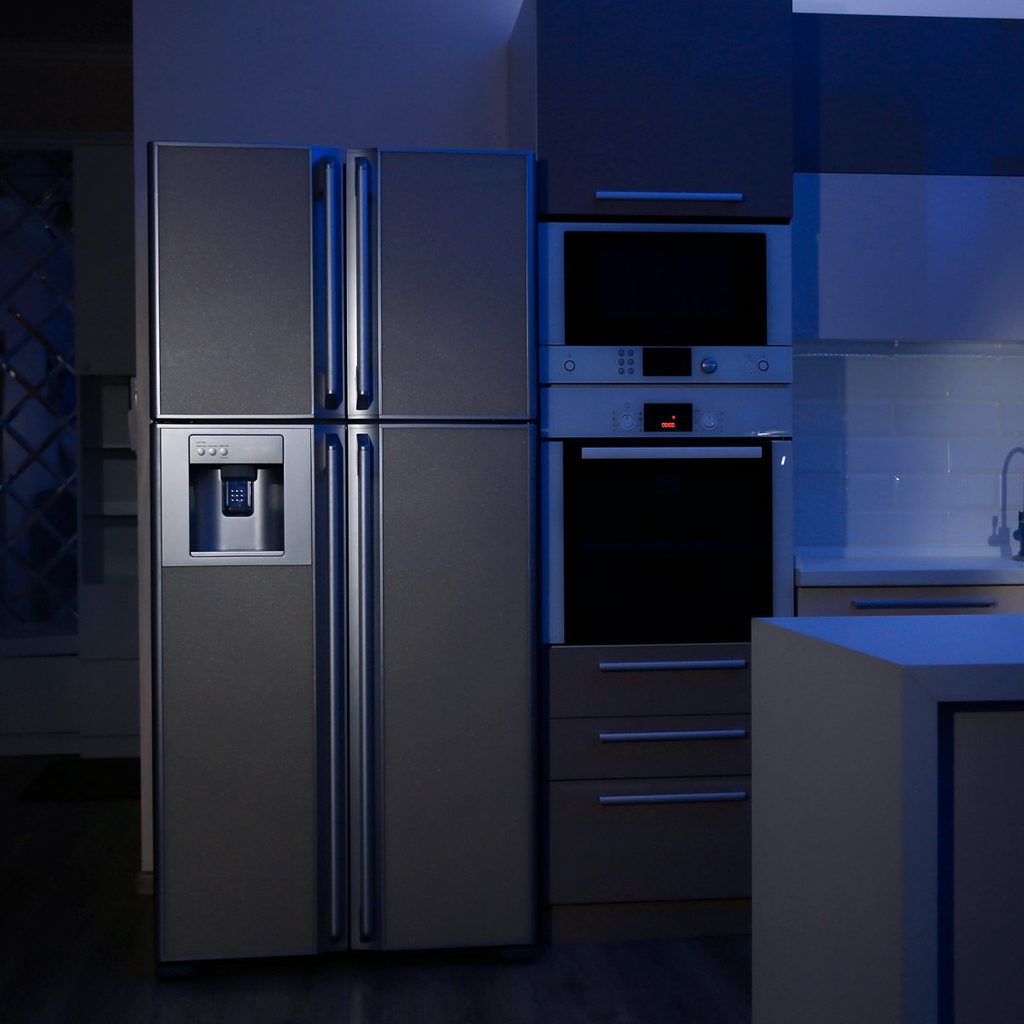How to Keep Your Food from Spoiling During a Power Outage
Updated: Sep. 02, 2021

This simple guide will help make sure your food stays safe.
Whether your power cuts out for no reason at all, or because of a natural disaster like a hurricane, it’s best to be prepared. You don’t want to be left in the dark! Here are some easy ways to make sure your food lasts throughout any sort of power outage.
How Long Can Food Last Without Power?
In the refrigerator, your food is good for up to four hours. In the freezer, food is safe for 48 hours if the freezer is full and 24 hours if the freezer is half-full.
This only applies if you keep the doors to the refrigerator and freezer shut, so don’t open them unless it’s absolutely necessary.
How to Keep Food from Spoiling
Before a storm, make sure your refrigerator and freezer are set at the optimal temperature. This helps keep your food safe to eat for the maximum amount of time.
In case of an impending natural disasters, take extra steps to make sure your food stays safe in case of a power outage.
Group Food Together at the Bottom of Your Freezer
The U.S. Food & Drug Administration advises you to group frozen food together at the bottom of the freezer. Heat rises, so keeping items together in the lower portion of your freezer helps keep them frozen for as long as possible.
Freeze Water and Gel Packs
Having a steady supply of frozen water and gel packs will help keep food cold if the power goes out. Fill some bottles with water and pop them into the bottom of your freezer, or if you’d prefer to save space, opt for gel packs instead. Remember that water expands when frozen, so if you use bottles, make sure you don’t overfill them.
Learn to meet home disasters head-on with Family Handyman‘s home emergency preparedness guide.
Use Coolers
The American Red Cross recommends using coolers if the power outage is expected to go beyond a day. Pack perishable food such as milk, meat, eggs and leftovers into a cooler surrounded by ice or frozen gel packs. Keep it at a temperature of 40°F for as long as possible. Since refrigerators can only retain the optimum temperature for a short time, it might be a good idea to start transferring perishable items into the cooler as soon as you pass the four-hour mark.
Here’s a list of foods to stock up on before a storm hits.
What Should I Do Once the Power Is Back?
When the power outage is over, check the temperature of your freezer, refrigerator and cooler. According to the FDA, if the freezer temperature on the appliance thermometer reads 40° or below or the food still contains ice crystals, you can refreeze the food. Refrigerated food should also be safe as long as the power was out for no more than four hours and the door was kept shut.
It’s always best to do a quick check of the food anyway. Throw out anything with an unusual odor, color or texture, and don’t taste the food to see if it’s gone bad—it might make you sick! You can also check the temperatures of perishable items like meat and fish to ensure that they’re still safe to eat, especially if you had to shift them to a cooler. If the temperature reads more than 40°, throw perishables out.
If the weather is cold where you are, it might be tempting to leave the food out in the snow and ice and let Mother Nature work her cooling magic. However, according to foodsafety.gov, this isn’t a great idea, as outside temperatures can vary wildly and put food in the “danger zone.” If any food that needed to be refrigerated has been left outside for more than two hours, discard it immediately.
Check out these hacks for getting through hurricanes. And if you’ve been advised to evacuate due to a natural disaster, don’t try to wait it out. Follow official instructions and leave the area as quickly as possible with your essentials.
